SHUTTLEWORTH MILITARY AIRSHOW 2021 - Old Warden Aerodrome / UK
Update: 2021/08/15 by Will Moore / CHK6
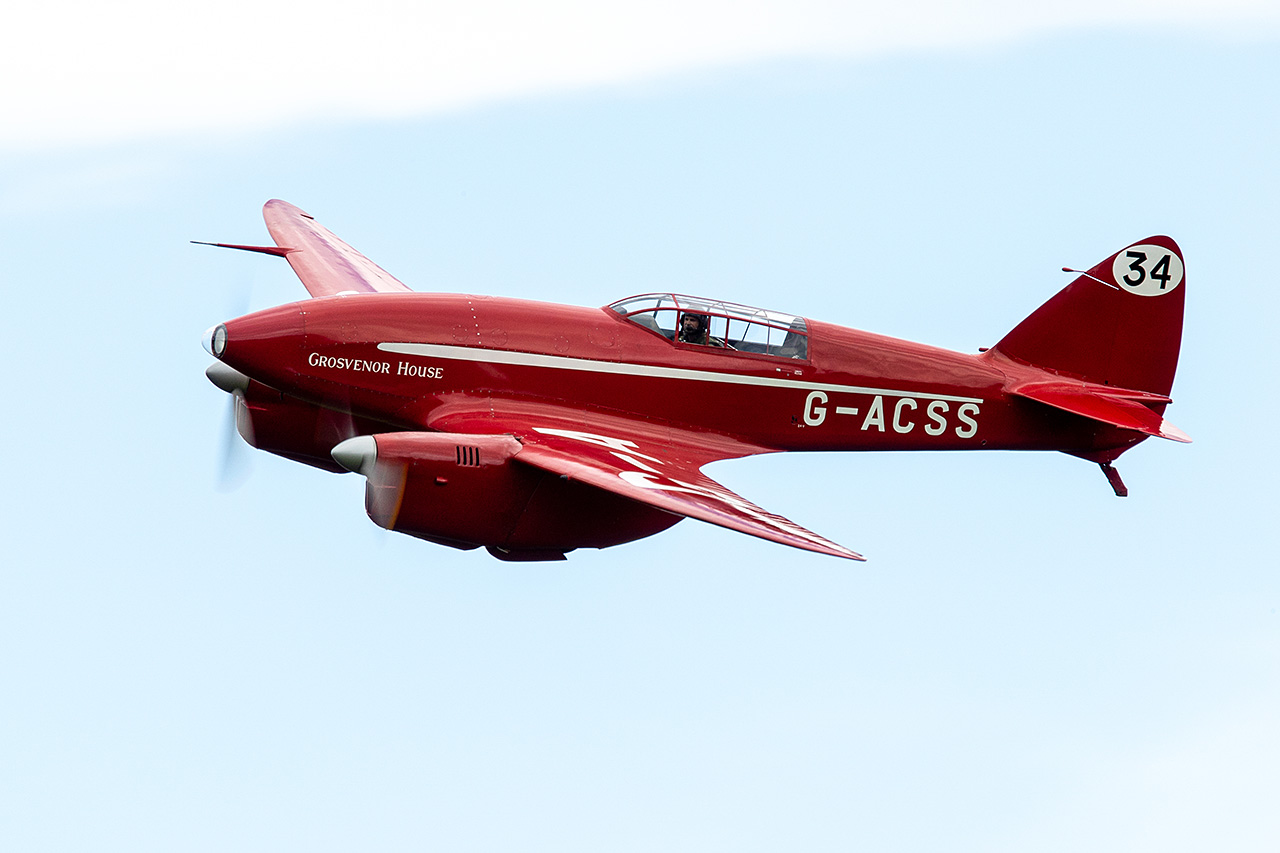
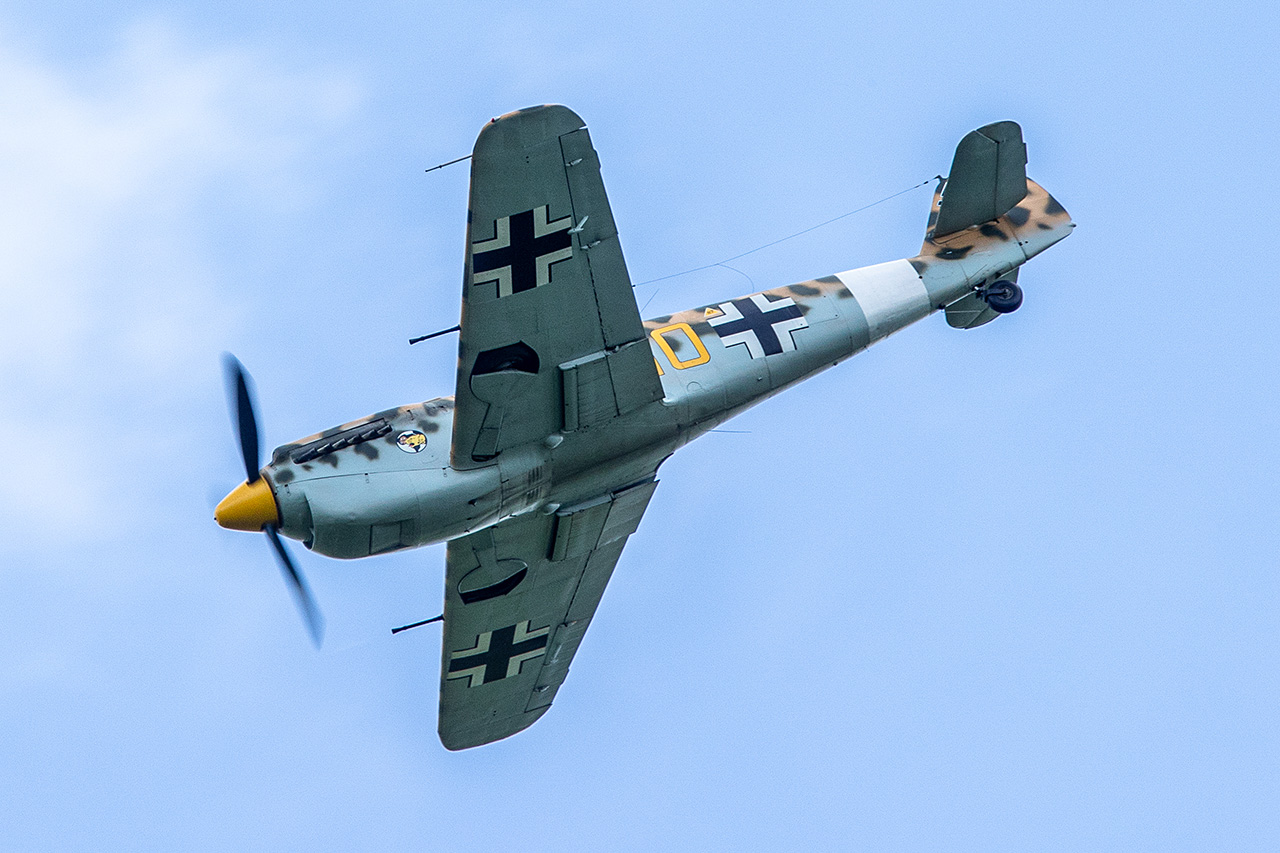
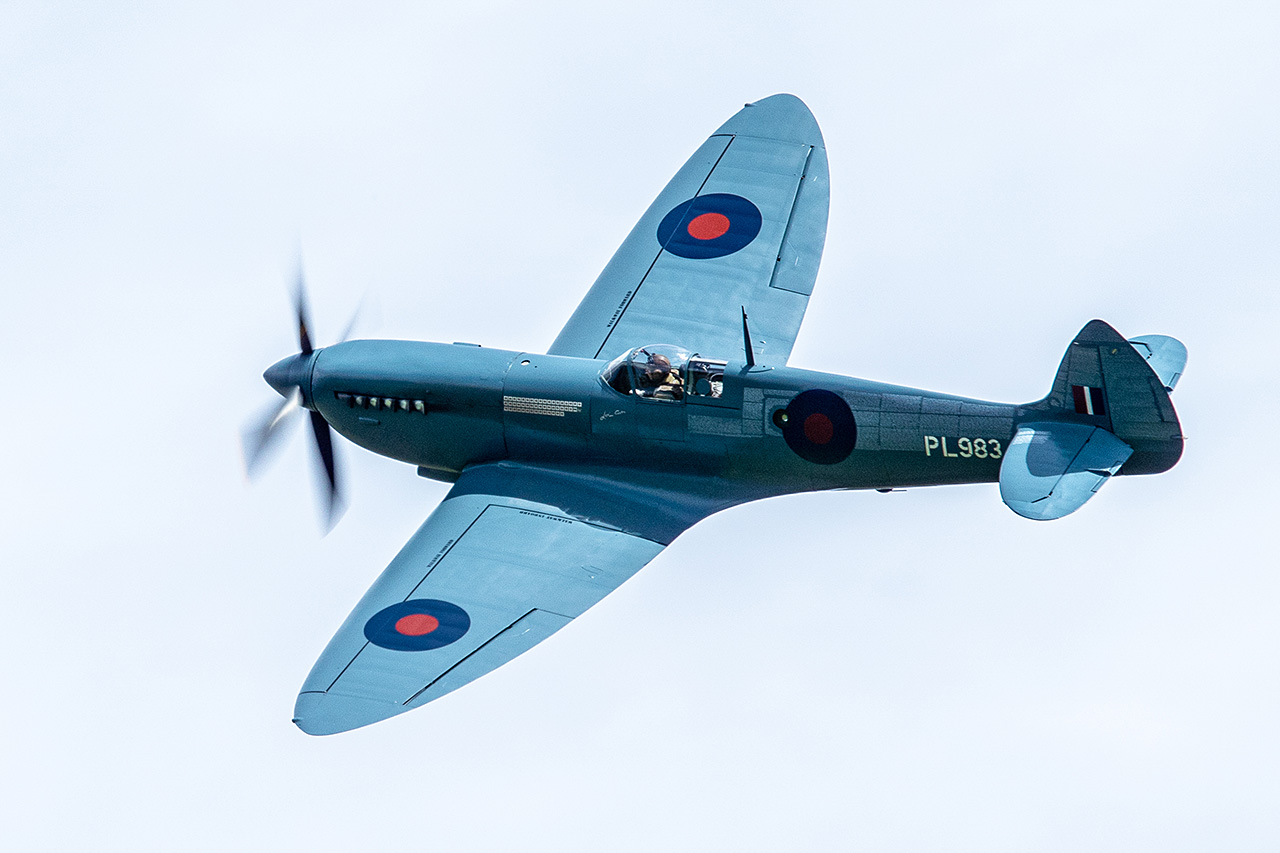
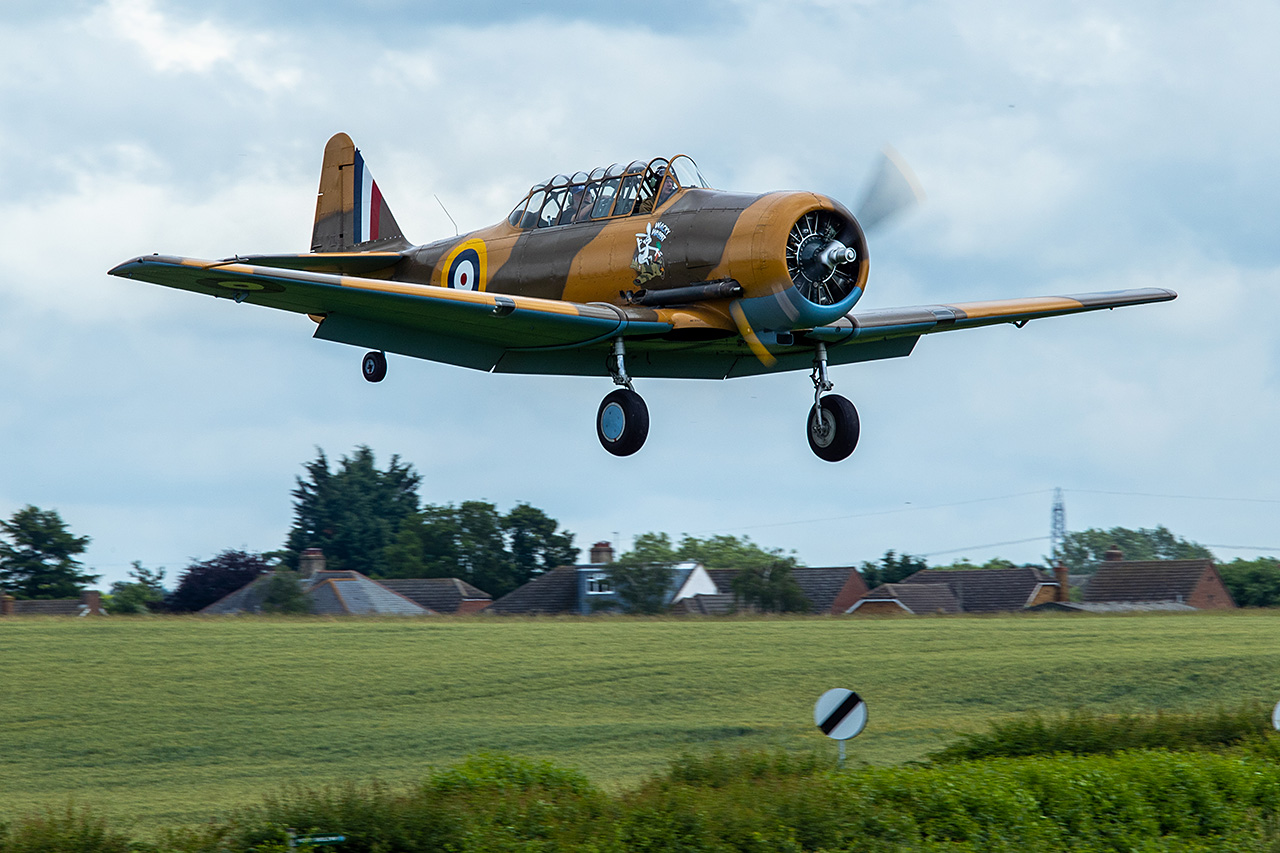
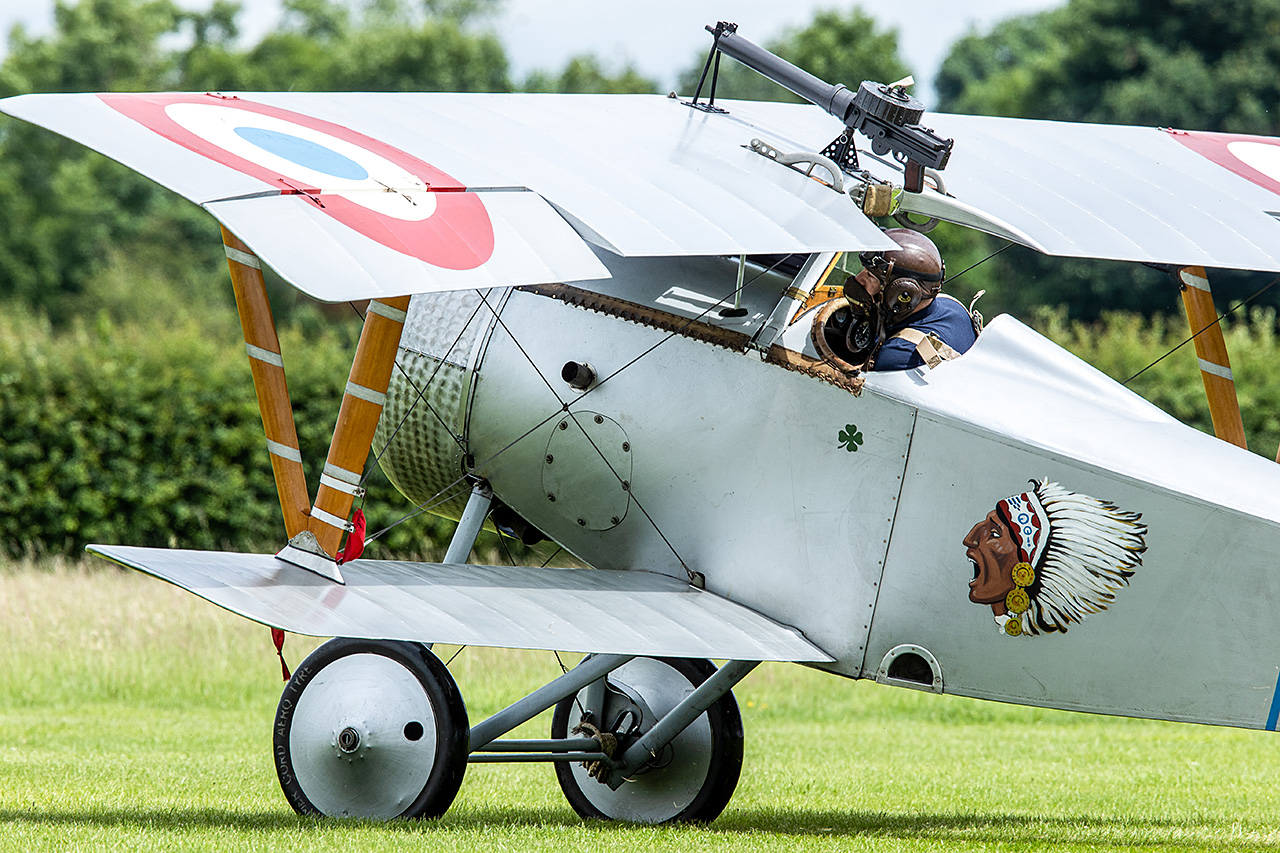
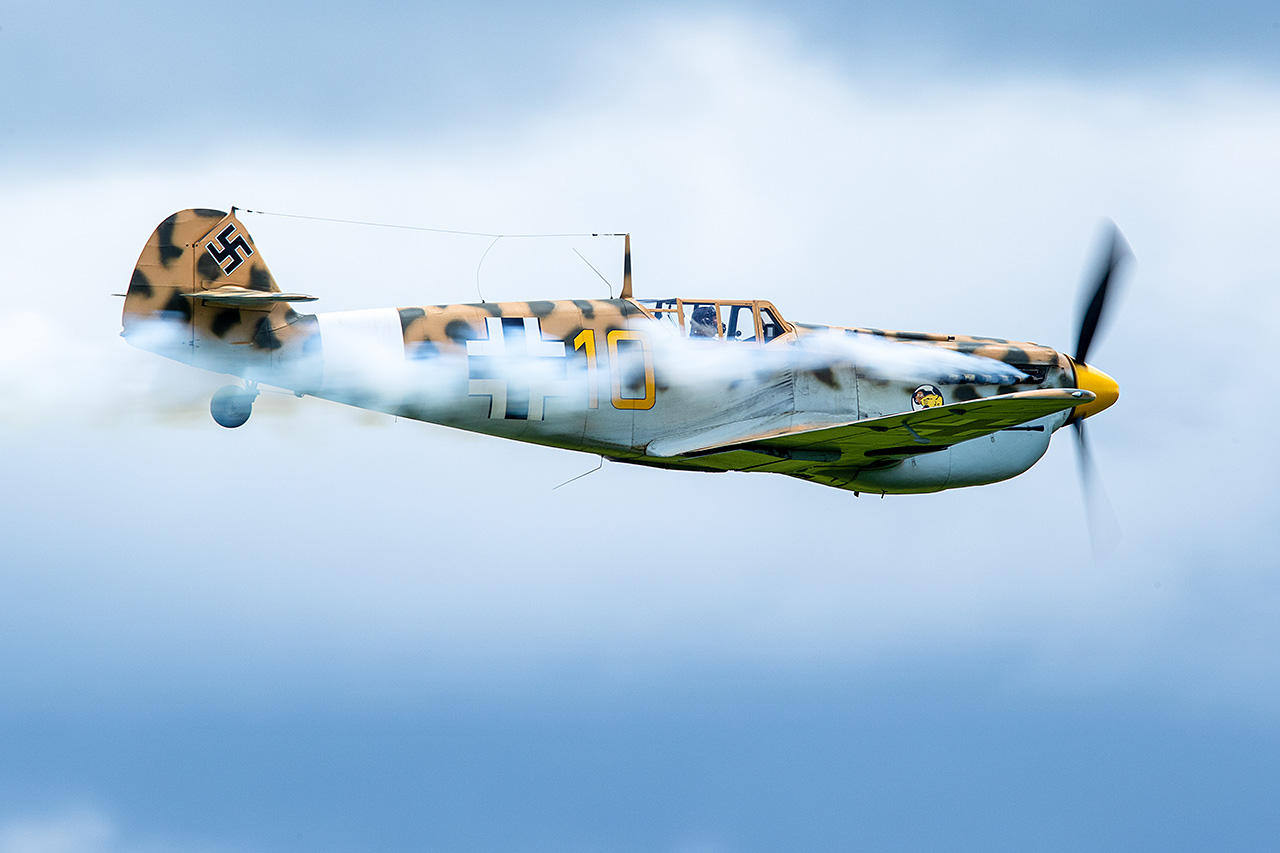
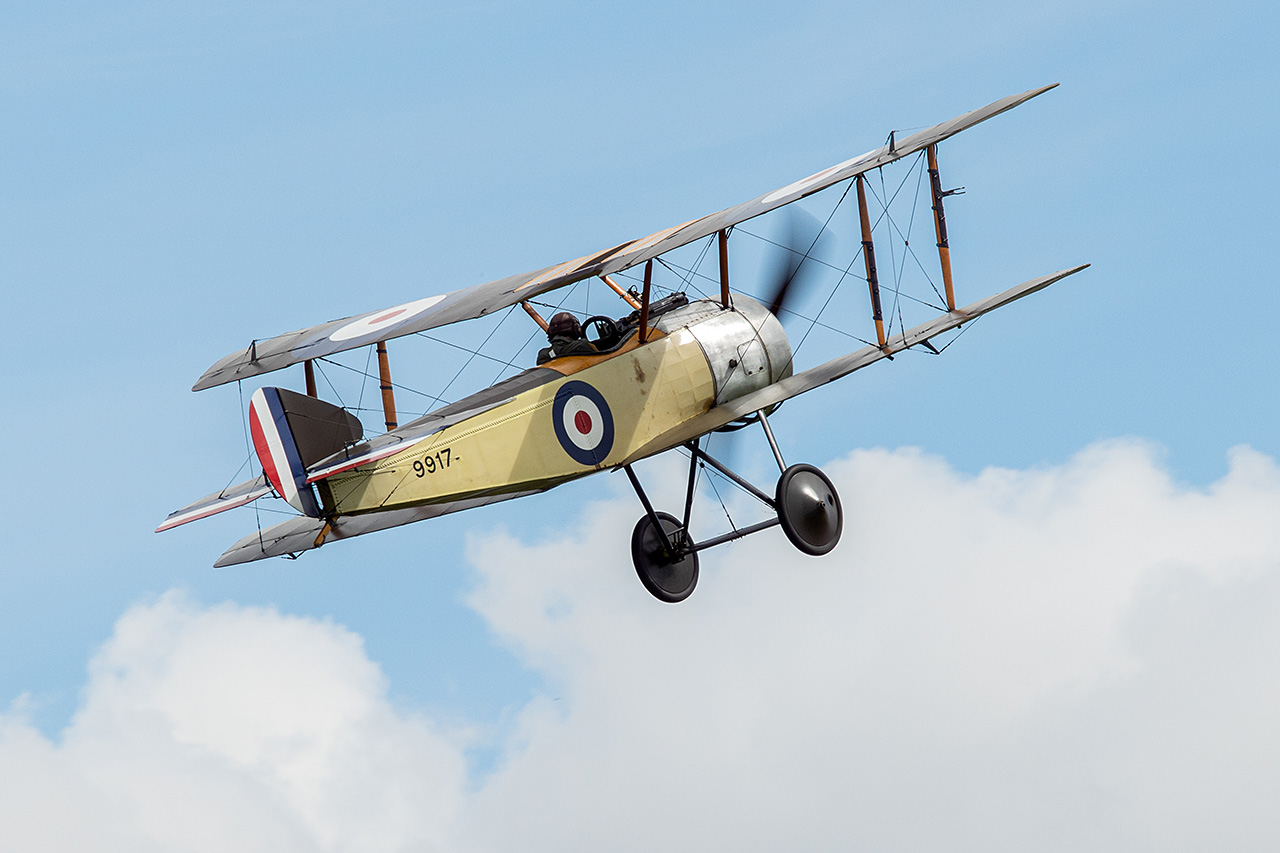
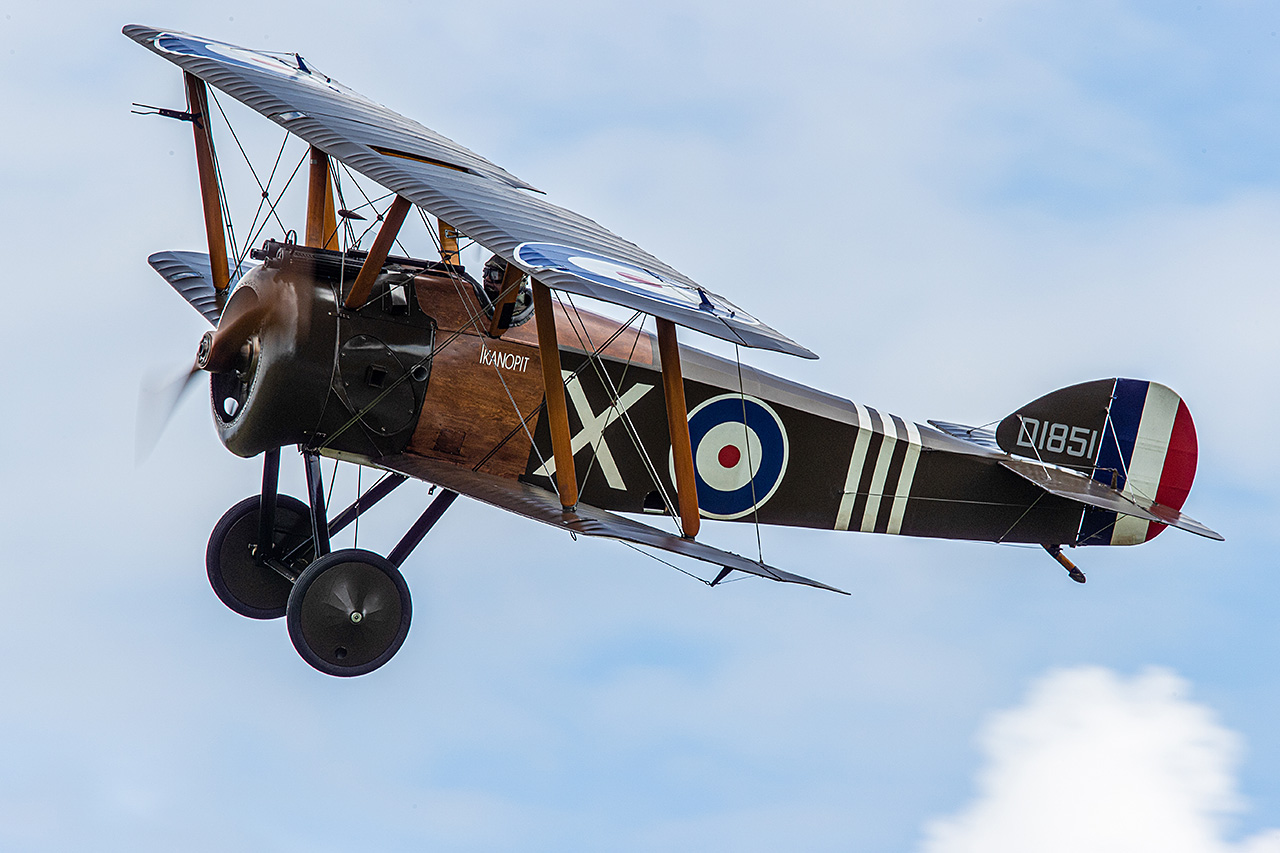
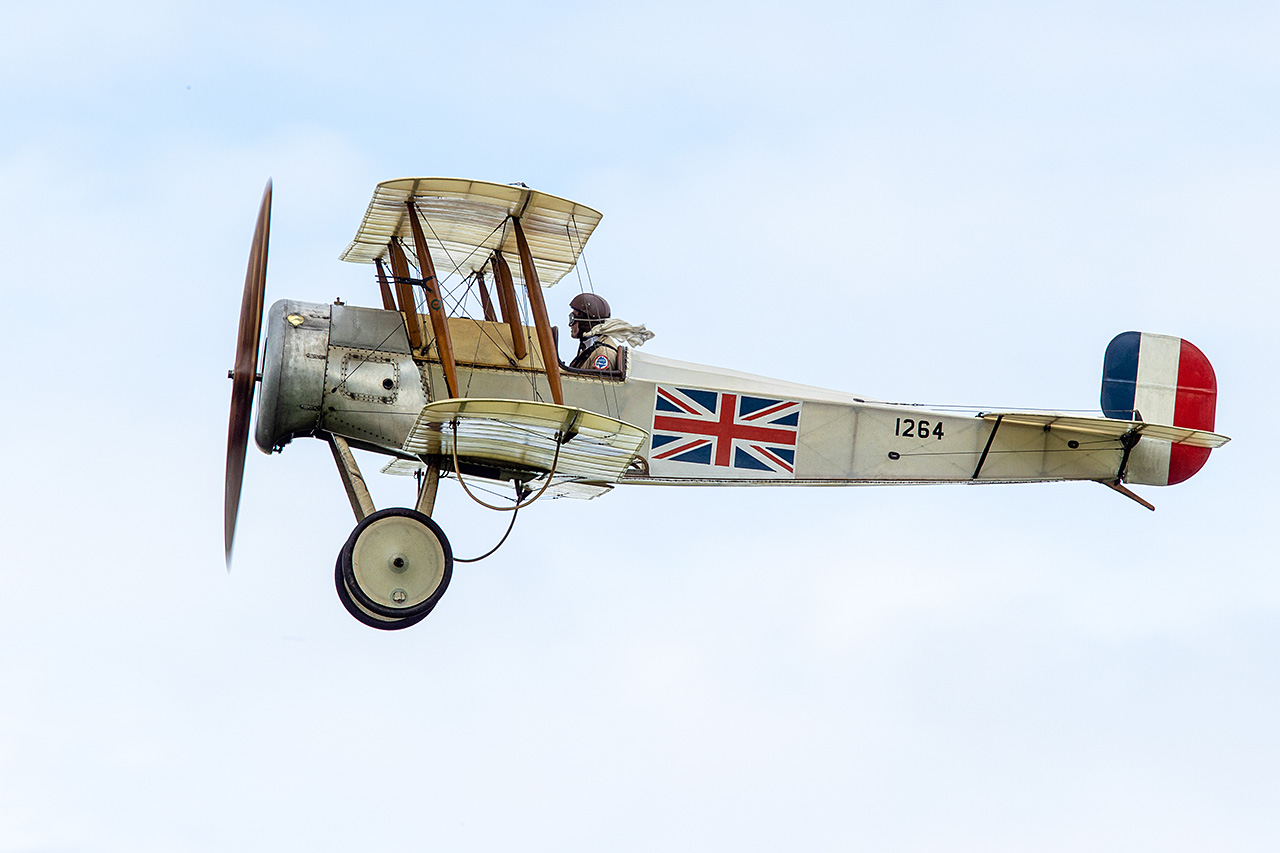
The year 2020/21 has been a difficult time both professionally and personally for a great many people all over the globe. Causing normal social life and commerce to be curtailed almost everywhere to differing degrees, most spectator sports and events being cancelled or held without the spectators. Air Shows were no exception with most shows being cancelled in the UK including The Royal International Air Tattoo (RIAT) at RAF Fairford and Flying Legends who were to host their first show at the new venue of Sywell Aerodrome in Northamptonshire. As the Covid lockdowns were implemented some event organizers started to look at risk management to see if new formats of managing events would work.
In UK airshows The Shuttleworth Collection were one of the first to implement a new management format to re start their display season in 2020. They have continued to develop their “socially distanced air shows” and have continued with a full calendar of events in 2021.
The show had sold out very shortly after tickets became available to order reflecting the demand from enthusiasts to get out and see some airshow action
W. Moore
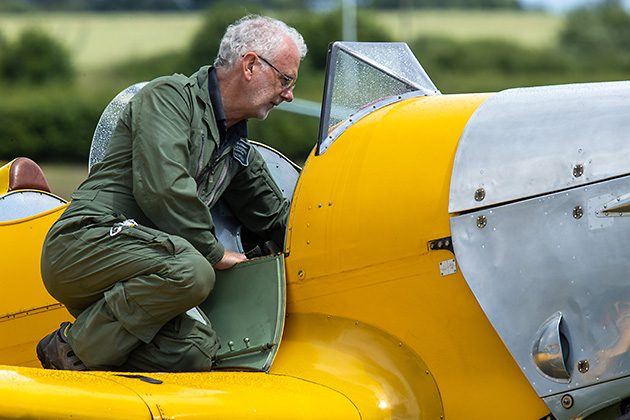
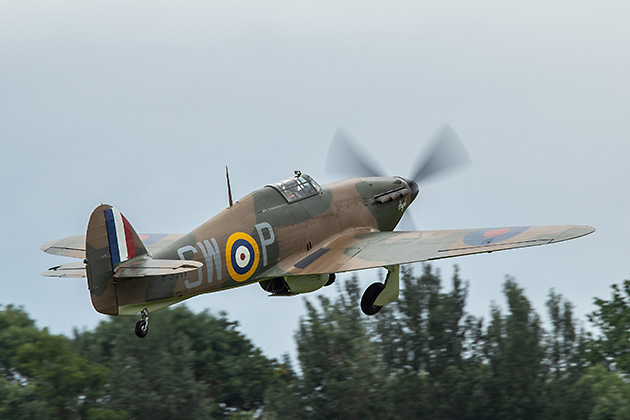
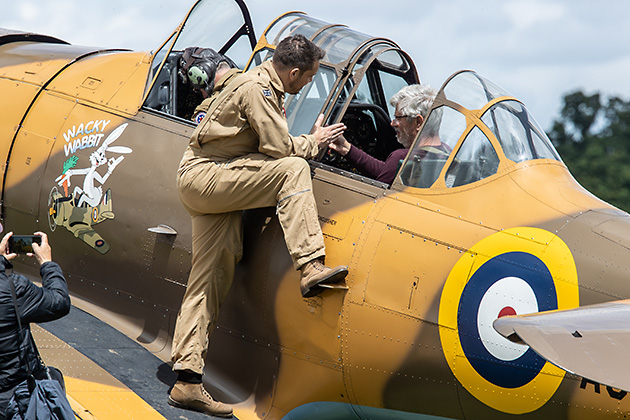
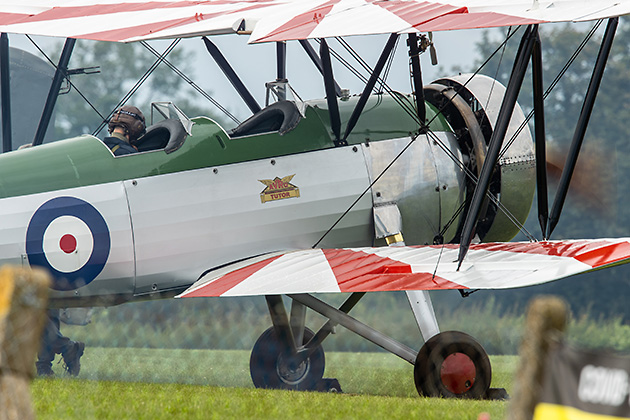
As the UK Government covid regulations had recently been relaxed the public were allowed to walk around, look at the aircraft and visit the hangars until just before flying started when all were direct to return to their parking bay for the duration of the flying display. No spectators were allowed on the fence line during the flying display and the first row of parking was set back approximately 20metres from the fence. This does of course compromise one of The Shuttleworth Collections greatest attractions, proximity to the aircraft. There are few things more pleasing to the enthusiast than having a classic aircraft startup just a few metres away from them, feeling the propwash in their face and the smell of warbird on the air. This also meant the display line was further away than the norm for The Shuttleworth Collection but in the circumstances, no one seemed to mind. Flight line walks were also still available as were experience flights curtesy of the North American AT-6 HARVARD, Ltd “WackyWabbit”.
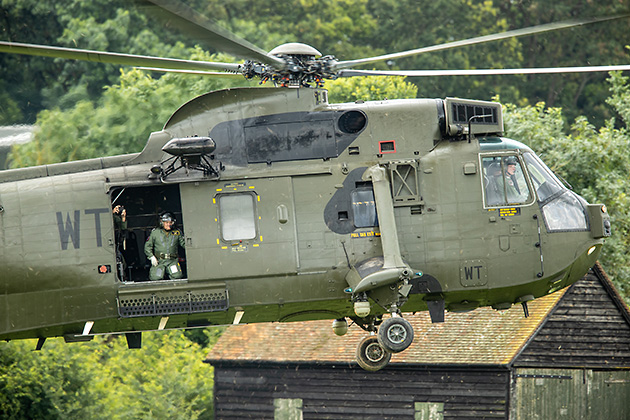
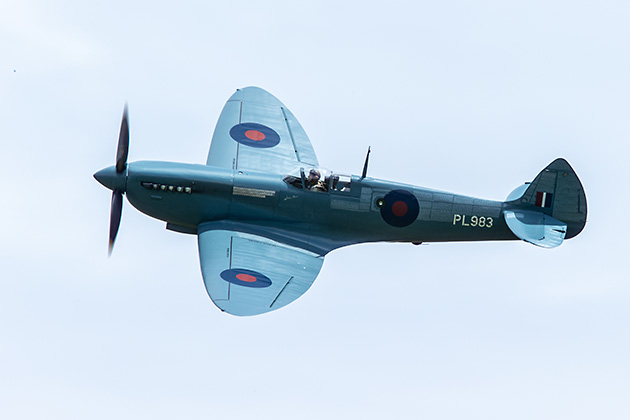
One advantage The Shuttleworth Collection has over most airshow organiser’s is that most of its display aircraft are “in house” with additional guest aircraft invited to match the theme of the event. This show had some memorable guests including the Westland Sea King from Historic Helicopters, a pair of Sud Aviation (Aerospatiale) Westland GAZELLE helicopters from The Gazelle Squadron Display Team, a Hawker HURRICANE Mk.IIc from the Battle of Britain Memorial Flight (Night Fighter scheme) a Supermarine SPITFIRE PR.XI (the NHS Spitfire) and Hispano Aviación HA-1112-M1L BUCHON from The Aircraft Restoration Company as well as a Hawker HURRICANE Mk.I from Bygone Aviation Ltd. There were some cancellations too due to adverse weather at home stations including the Historic Army Aircraft Flights Bell H-13 SIOUX and Westland SCOUT Helicopters. The Westland WASP of Terry Martin also suffered the same misfortune. The Shuttleworth Team also had to cancel the Edwardian aircraft as the weather worsened later in the day.
The Battle of Britain Memorial Flight’s Hawker Hurricane Mk.IIC PZ865 now in the livery of No.247 Squadron Night Fighter ZY-V opened the flying display with several flybys
W. Moore
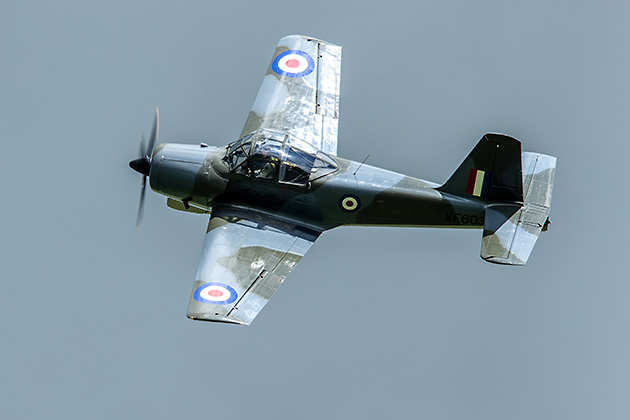
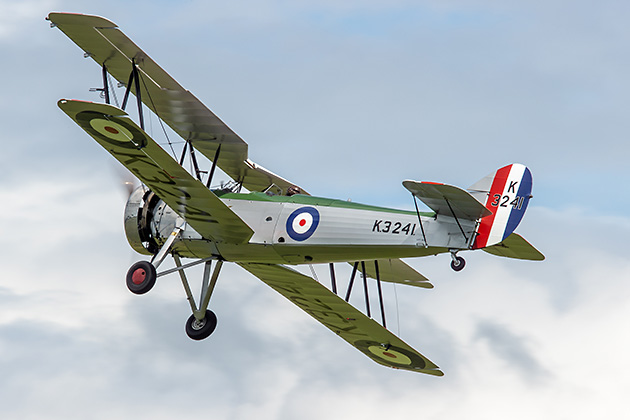
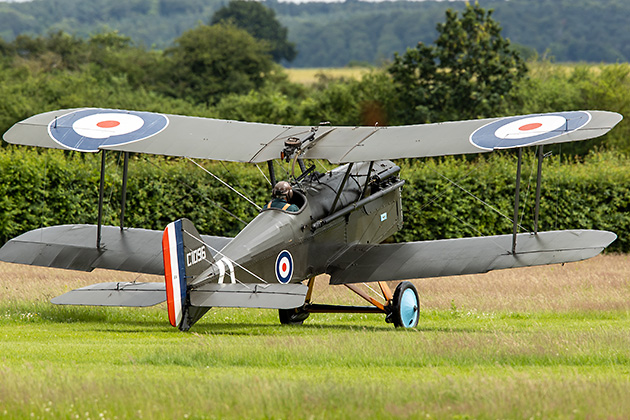
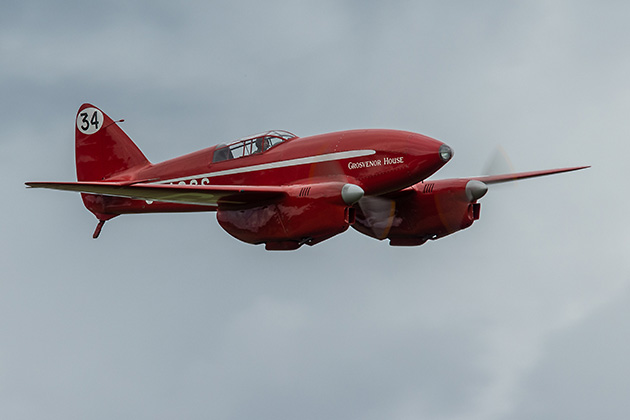
Further World War One aircraft were represented by the excellent reproduction Royal Aircraft Factory SE5A of Roy Palmer David Bremner’s original rebuild Bristol SCOUT and John Gilbert’s reproduction Nieuport 17. Nowhere in the UK can you get to see these aircraft in such close proximity to the spectators even in a socially distanced show.
The Shuttleworth Collection’s deHavilland DH.88 COMET was flying in this show not due to its military service but due to the technology and engineering that was taken from this design and incorporated into other de Havilland aircraft. It is always a highlight of any UK airshow to have the De Havilland DH.88 COMET in its line up, it’s a truly beautiful aircraft.
The Polikarpov Po 2 was a basic training aircraft that was also used in the ground attack and aerial reconnaissance role
W. Moore
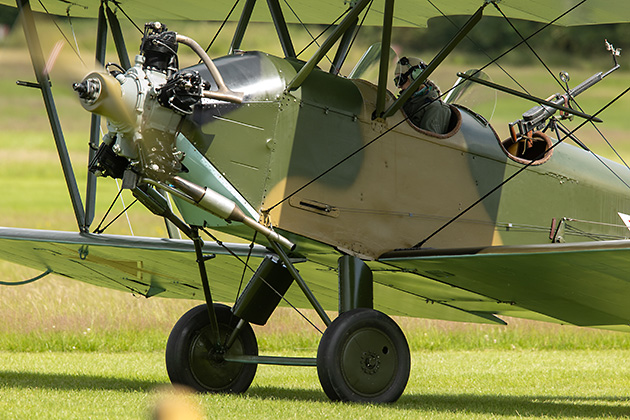
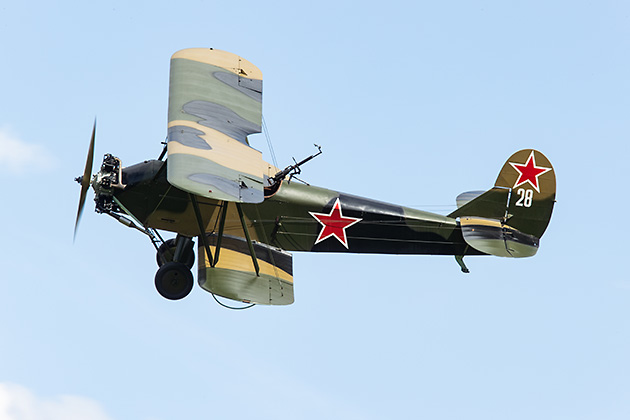
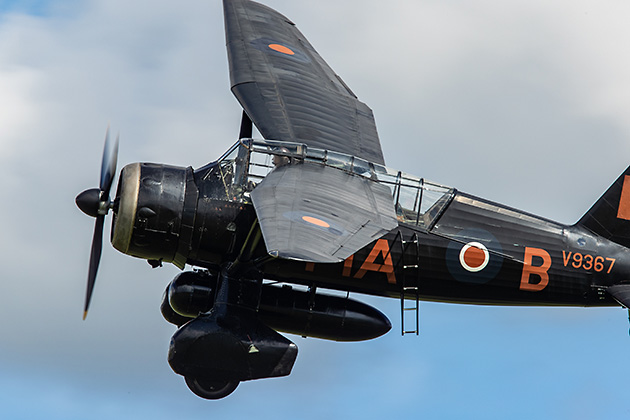
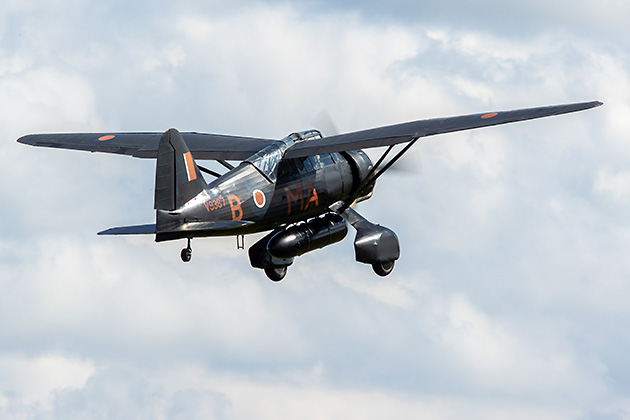
The Westland LYSANDER was built in response to a British Air Ministry requirement for an army co-operation aircraft. The designer Arthur Davenport interviewed RAF pilots to understand what they wanted from the aircraft. The resulting design was no beauty but was innovative and aerodynamically advanced, providing very good low speed performance and short takeoff and landing characteristics. The wings have a taper to the fuselage and wing tip giving an insect like impression, automatic slats were also incorporated further assisting low speed handling. The undercarriage is fixed with fairings covering the wheels. The fairings also hold mounting points for machine guns. The cockpit offers very good visibility above and below the wing spar. Small bombs and supply canisters could be carried from the wings and a large supply canister could be carried below the fuselage.
The type was deployed with the British Expeditionary Force in 1939 but proved to be easy targets for the Luftwaffe. After the British retreat from France the type was re-tasked after taking heavy losses. Later in the war the LYSANDER was to be used in the role we now associate with the type with the formation of No 138 (Special Duties) Squadron working with the Special Operations Executive (SOE) The operations included supply drops to resistance units in France, delivering and recovering agents from the SOE who undertook clandestine operations in occupied France. They also retrieved downed aircrews that were evading capture. RAF Tangmere is the airfield most recognised for its association with the SOE and the LYSANDER, situated on the south coast of England it was the perfect location for the nighttime operations. The Shuttleworth Collection’s example is presented in the all black scheme associated with the night time operation of the SOE.
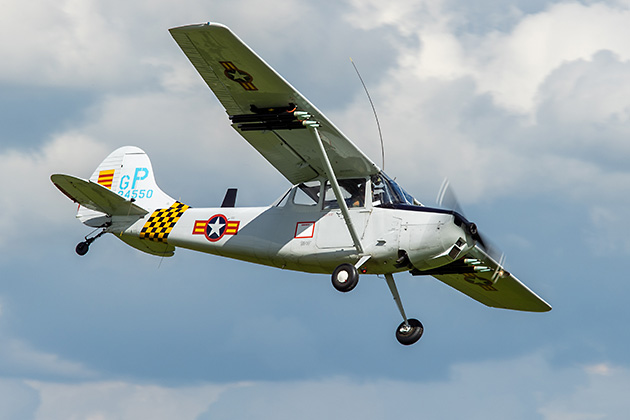
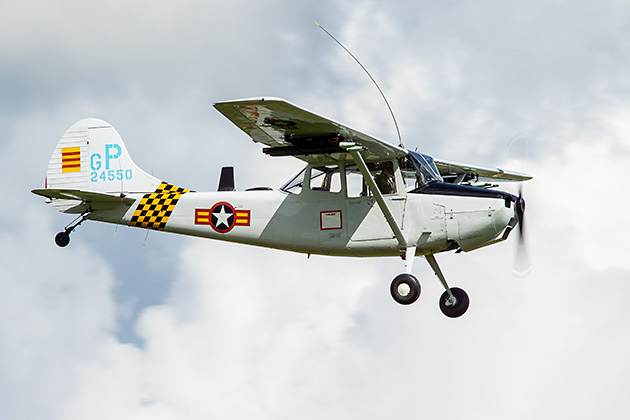
The Cessna BIRD DOG was another artillery spotting and army liaison aircraft used by the US Army and the US Marine Corps. Used in its designed role as an artillery spotter it also undertook operations in medical evacuation and front line communications, convoy escort and forward air controller. Over 3000 of the type were ordered by the United States Department of Defense manufacturing started in 1950 and continued until 1959. The name was given after a competition to name the aircraft. The BIRD DOG reflected the initial role of the type to circle a target and relay targeting information to the artillery units.
The type is no longer in service with British Forces but for a long time was the mainstay of the Air Force rescue services and the Royal Navy in numerous roles
W. Moore
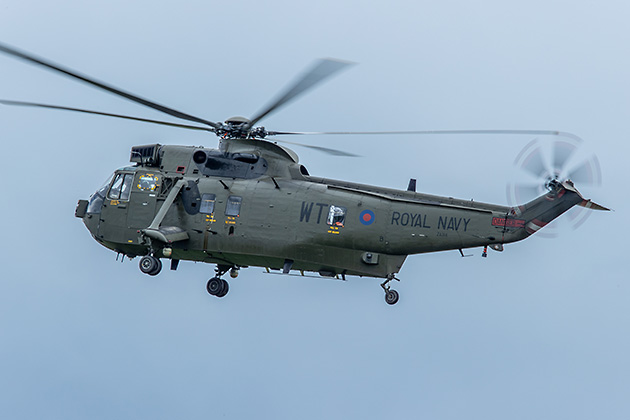
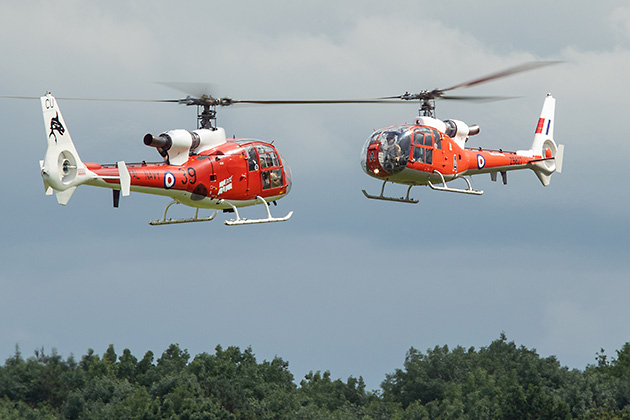
The heavy metal in the show was provided by Historic Helicopters and their Westland SEA KING HC.4 ZF122. Built in 1982 by Westland Helicopters under licence from Sikorsky this aircraft served with No. 846, 845 and 848 Naval Air Squadrons and was recently restored by Historic Helicopters. Powered by Rolls Royce Gnome engines with British anti-submarine warfare systems and a fully computerised flight control system. The type is no longer in service with British Forces but for a long time was the mainstay of the Air Force rescue services and the Royal Navy in numerous roles. It was a pleasure to see this icon of helicopter aviation at Shuttleworth. The display showed all the characteristics and power associated with the type.
The other helicopter display was from The Gazelle Squadron Display Team based near Wantage in Oxfordshire. Established in 2014 the Squadron display with two aircraft and plan to increase that number to four in 2022. All the Squadron’s aircraft are ex British Forces helicopters built by Westland Helicopters under licence from Sud Aviation. The first flew in 1967 and remained in production for 24 years. The five-seater helicopter was designed for training, light transport and ground attack roles it was the first to incorporate the fenestron tail rotor. An excellent formation display followed at low and high level offering good all round views of the type.
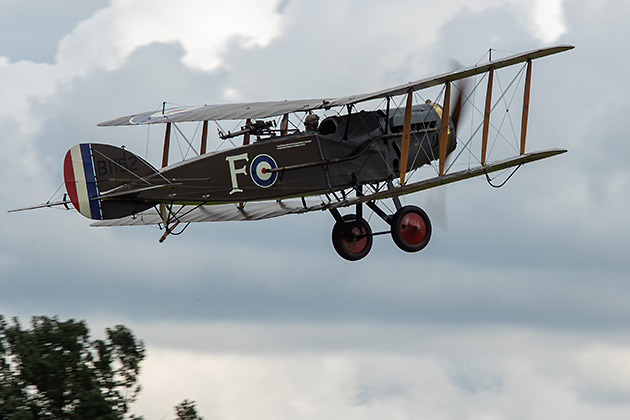
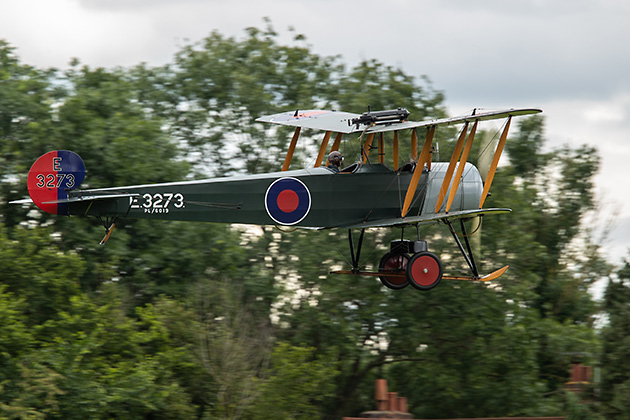
The next section of the show was taken by The Shuttleworth Collection’s immaculate Bristol F.2B FIGHTER and the Avro 504k. The Bristol F.2B FIGHTER was another type born of the need for a reconnaissance and artillery spotter but with the ability to defend itself. With the development of the Rolls Royce Falcon inline engine the Bristol designer Frank Barnwell amended the aircraft design to incorporate the new engine. This offered a greatly improved performance and opened the door to very different rolls than the original intent. The type went into action in early 1917 with The Royal Flying Corps (RFC) and was not successful due to the tactics the pilots used. They were not flying as a fighter and the German fighters took full advantage of that. As the RFC pilots amended the tactics and engaged the enemy as fighters their success increased. Over 3000 of the type were built. The Shuttleworth Collection’s aircraft D8096 was entrusted to the Collection by the Bristol Aeroplane Company who had restored it in 1952. The Avro 504k is another stunning example of WWI aviation, the type was in service with the RFC and the Royal Naval Air Service (RNAS) before the start of hostilities. The design soon became obsolete in combat as the technology developed quickly and it was relegated to training duties, a role that it excelled in. By the end of WWI over 8000 Avro 504 had been built and remained active in the trainer role between the wars with many being bought by private owners at the end of their military service.
The Spitfire PR XI has become quite the celebrity in the UK during the Covid 19 lockdowns by performing fly-pasts at numerous NHS (National Health Service) hospitals around the UK
W. Moore
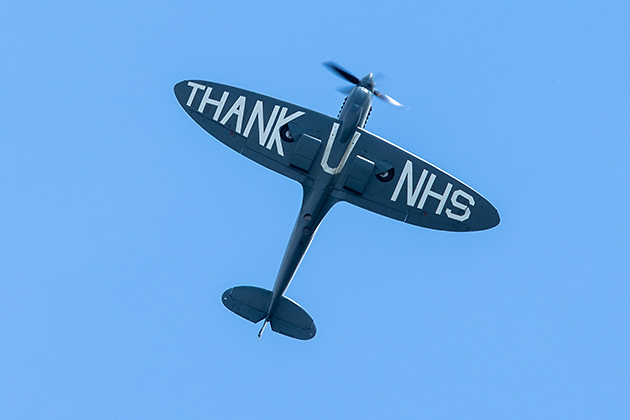
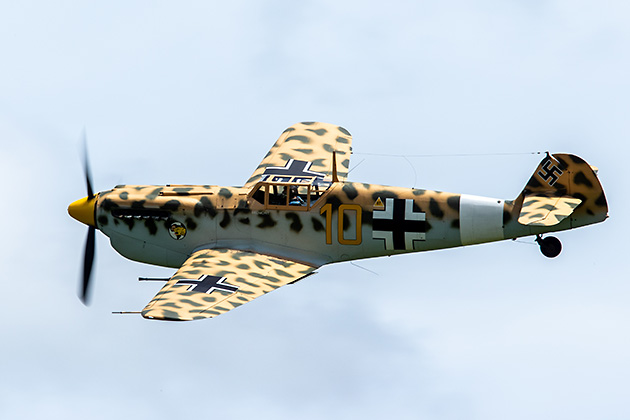
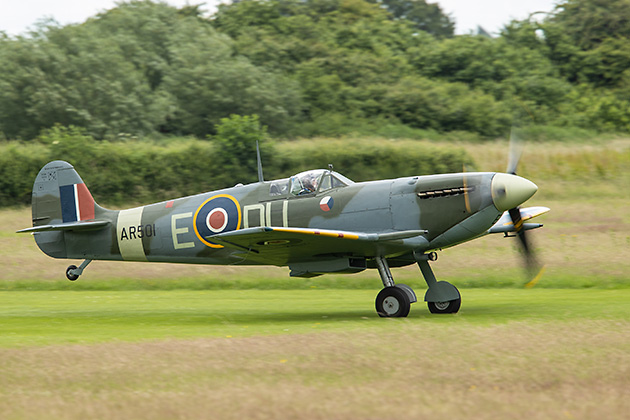
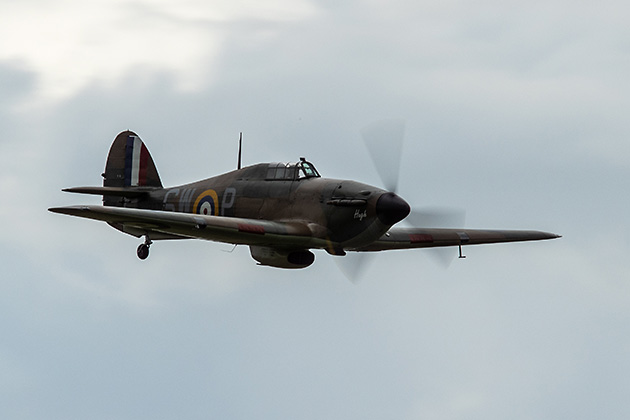
With the weather progressively deteriorating the organiser cancelled the Edwardian aircraft leaving only the Collection’s Supermarine SPITFIRE MkV, Gloster GLADIATOR and Hawker HURRICANE Mk.I from Bygone Aviation. Unfortunately, the rain front that had held off all day finally arrived forcing the spectators to take to their cars and effectively ending the show a little short. The Hawker HURRICANE P3717 was built in 1940 and fought in the Battle of Britain in the hands of Pilot Officer W. Samolinski. Badly damaged in combat the aircraft was eventually repaired and returned to service after the conclusion of the Battle of Britain. The aircraft was later modified to Mk.II standard before being transferred to Russia to see out the rest of the war. The Collection’s GLADIATOR seemed to land quickly after only a couple of passes and did not command the skies as it usually does, this may have been prudent flying as the weather closed in. The SPITFIRE Mk.Vc is another veteran of the actual WWII and then not only the Battle of Britain the movie but also Pearl Harbour the movie in 2000. Built by Westland Aircraft in 1942 it served with 310 Czech Squadron at Duxford on bomber escort duties. Eventually being acquired by The Shuttleworth Collection in 1961. In 2005 a full rebuild was undertaken that uncovered evidence of wartime repairs. Returning to flight in 2018 back in the original markings of 310 (Czech) Squadron. Unfortunately, the weather interfered with the audience’s appreciation of this final part of the days flying.
VERDICT: The Shuttleworth Collection showed its expertise in organising and managing an air display even during a pandemic, the ground rules were followed and politly enforced by the stewards when folks forgot them. The weather held off for most of the day and the team took every opportunity to display the aircraft at there best, and with good weather there are few places in the world that do this better than The Shuttleworth Collection at Old Warden Aerodrome in Bedfordshire.
We would strongly recommend international aviation enthusiasts visiting the UK to put the Shuttleworth Collection on their itinerary in a post Covid 19 world and try to visit on an airshow day. If the weather is good you will not be disappointed. If you can’t get there for an airshow, go anyway to see the collection in the museum hangars, again you will not be disappointed.
Our special thanks go to Sophie Jeffery the press liaison, to Tim Callaway and John Dibbs, who delivered an entertaining and informative commentary. Our further thanks also go to the Shuttleworth Veteran Aeroplane Society (SVAS) a charity whose members assist in the running of the events and the raising of funds to support the collection and purchase aircraft for the collection. The Charity are always looking for new members of the team so if you would like to do more than watch and become part of the event look up www.svasweb.org
Will Moore / CHK6 UK

